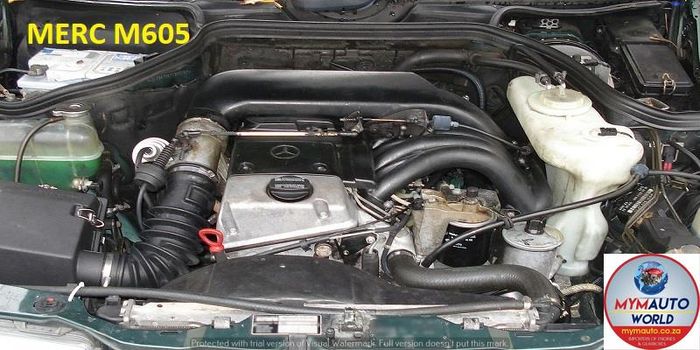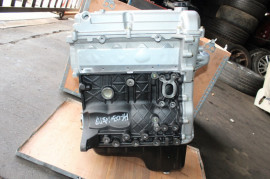Opel Corsa Engine: Top Tips for Maintenance and Treatment
Exploring the Inner Functions of a Compact Automobile's Engine System
As vehicle drivers, we typically take for provided the complex processes that occur within the confines of our car's engine system. In this exploration of a portable lorry's engine system, we will certainly untangle the inner workings of this mechanical symphony, shedding light on the mysteries that drive us onward on our daily journeys.
Burning Refine Overview
The burning procedure in a small lorry's engine system is an essential mechanism that effectively transforms fuel into energy to power the lorry. This process takes place within the combustion chamber of the engine, where gas and air mix, fire up, and create controlled explosions. The burning process consists of 4 major phases: intake, compression, power, and exhaust.
During the consumption stage, the piston relocates downward, pulling in a mixture of air and gas into the burning chamber. The next phase, compression, entails the piston moving upwards, pressing the air-fuel blend to boost its strength. Consequently, in the power phase, the ignition system stirs up the compressed blend, leading to a quick development of gases that compels the piston back down. This downward motion produces the power needed to drive the automobile. In the exhaust stage, the scorched gases are expelled from the combustion chamber via the exhaust shutoff, preparing the chamber for the following cycle. This cyclic combustion process is basic to the procedure of a small automobile's engine system, guaranteeing effective power conversion for propulsion.
Piston and Cyndrical Tube Communication

The piston's exact fit within the cyndrical tube is vital for keeping optimal compression and stopping energy loss throughout burning. Tight clearances between the piston and cylinder walls make certain efficient securing, permitting the piston to relocate efficiently without allowing gases to leakage past. Appropriate lubrication is also essential to decrease friction and wear in between these parts, enhancing long life and efficiency.
In addition, the layout and products utilized in producing the piston and cylinder impact engine performance and resilience. Modern engines often employ lightweight yet sturdy materials like light weight aluminum alloys for pistons and cylinder liners to minimize inertia and enhance thermal performance. Overall, the unified communication between the piston and cylinder is basic to the engine's performance and general efficiency.
Gas Shot System Capability
Gas shot systems in portable automobile engines play an essential duty in specifically delivering fuel to the combustion chamber for effective and controlled ignition. The gas shot system works by infusing fuel into the combustion chamber at the optimal moment during the engine's operation (opel corsa engine). This exact timing makes certain that the fuel mixes evenly with the air for correct combustion, leading to boosted gas performance and lowered find exhausts
There are mainly two kinds of gas injection systems made use of in portable lorry engines: port gas shot (PFI) and straight fuel injection (DFI) PFI systems inject gas into the intake port prior to the intake shutoff, while DFI systems infuse gas straight into the burning chamber. Both systems have their benefits, with DFI supplying much better fuel atomization and PFI supplying a much more economical remedy.
Recognizing Engine Cooling Systems
Effective operation of a compact automobile's engine relies greatly on the efficiency of its cooling mechanisms. Engine cooling is vital to protect against overheating, which can cause severe damage and lowered performance. The air conditioning system in a portable automobile generally contains several elements collaborating to manage the engine temperature level. One crucial component is the radiator, which makes use of coolant to soak up warmth from the engine. As the warm coolant moves with the radiator, it launches heat right into the air, cooling down prior to going back to the engine. The water pump circulates the coolant with the engine and radiator, ensuring a consistent circulation to regulate temperature. Furthermore, the thermostat helps manage the coolant circulation to keep ideal engine temperature level. Some lorries likewise have cooling down followers that trigger when added cooling is required, such as throughout heavy traffic or heat. Understanding these engine cooling systems is vital for maintaining the efficiency and durability of have a peek at this website a compact vehicle's engine system.

Exhaust System Elements Explained
The optimum functioning of a compact lorry's engine air conditioning mechanisms depends upon a corresponding system called the exhaust system, which comprises different essential parts for making sure effective discharges and engine efficiency. The exhaust system includes components such as the exhaust manifold, catalytic converter, muffler, and tailpipe. The exhaust manifold accumulates exhaust gases from the engine's cylinders and paths them to the catalytic converter. The catalytic converter then converts hazardous toxins in the exhaust into much less dangerous exhausts prior to launching them with the muffler and tailpipe.
One crucial part of the exhaust system is the oxygen sensor, which checks the oxygen degrees in the exhaust gases to aid manage gas intake and guarantee optimal engine efficiency. opel corsa engine. Furthermore, the resonator may be existing in some exhaust systems to minimize sound degrees. On the whole, the exhaust system plays an important function in keeping engine performance, reducing unsafe discharges, and making sure a quieter driving experience for compact lorry proprietors

Verdict
Finally, the compact lorry's engine system is an intricate mix of elements that function together to assist in the combustion procedure, convert gas into power, and get rid of waste gases. Understanding the internal workings of the engine system, consisting of the piston and cyndrical tube interaction, gas injection system, engine cooling mechanisms, and exhaust system elements, is essential for maintaining optimum performance and performance of the automobile.
The burning process in a compact automobile's engine system is a crucial device that successfully converts gas into energy to power the lorry.Fuel shot systems in portable car engines play an important role in specifically supplying gas to the burning chamber for regulated and effective ignition.There are largely two kinds of fuel shot systems made use of in portable lorry engines: port gas shot (PFI) and direct gas injection (DFI) Recognizing these engine air conditioning systems is important for maintaining the performance and durability of a compact lorry's engine system.
The optimal click this link functioning of a portable car's engine air conditioning systems depends on a complementary system known as the exhaust system, which consists of different essential components for ensuring reliable emissions and engine performance.